La Observación. Fuente de Ideas para Escribir//Observation. Source of Ideas for Writing
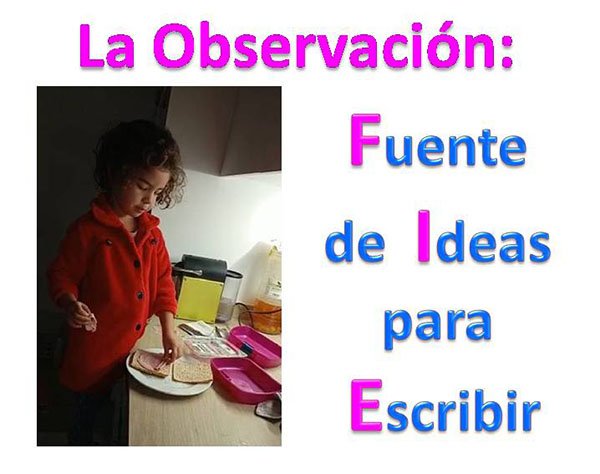
Mis vecinos son una familia conformada por cuatro adultos y una bebé que ya tiene como año y medio. Nuestras casas las divide una pared perimetral, la ventana de mi lavandero da con el patio frontal de la casa de ellos, por lo que cuando están en el porche es fácil escucharlos con mucha nitidez aunque yo no quiera. El caso es que muchas veces escucho a la joven madre jugando con su pequeña niña y enseñándole nuevas palabras y la verdad es que sus resultados son asombrosos.
La niña habla con bastante claridad y ya está haciendo construcciones de ideas completas, ya no dice solo papá sino papá ven; no dice agua sino dame agua o no dice abuela sino sube abuela, me imagino que para indicar que la abuela la cargue.
Diana en enero cumplió un año y su mamá tal vez desde noviembre comenzó a “entrenarla” para que apagara la vela de su primer añito. Cada tarde se sentaba en el porche le cantaba cumpleaños feliz, con su dedo índice, simulando una vela, la soplaban y ambas aplaudían, efectivamente, el día de su cumpleaños la niña, apagó la velita y aplaudió su día.
Cuando me encuentro con la abuela, emocionada, comienza a contarme los adelantos de la niña: me comenta que la niña habla hasta por los codos pero que está floja para caminar, lo que quiere es estar en brazos todo el santo día, que ya está comiendo de todo, le gusta agarrar la cucharilla, que ya quiere comer sola y por allí se va, como cualquier abuela orgullosa que va midiendo los avances de su nieta.
Si nos ubicamos desde fuera, como es mi caso, yo veo que Diana va muy bien con su edad, que verbalmente ha sido muy estimulada, todos los adultos le hablan constantemente, le preguntan, le van enseñando palabras de su entorno, le cantan y la niña responde muy bien a ello. Por otro lado, al disponer de cuatro pares de brazos que la quieren tener cargada es posible que haya retrasado su motricidad para caminar, es una especulación de mi parte, tal vez, si los cuatro adultos se propusieran a ejercitarla en el caminar ya la niña estuviese corriendo por el patio, es una posibilidad.
Lo que quiero mostrar con esta corta descripción es que cada niño es un mundo, cada uno tiene sus tiempos y que los estímulos hacen que avancen en estos procesos.
Cuando uno cursa la carrera de pedagogía son muchas las asignaturas que ve relacionadas con el desarrollo evolutivo de los niños, es decir, cómo van evolucionando en las diferentes edades en todos los aspectos de su vida. Así tenemos unos parámetros generales que sirven como referencia a padres, docentes, médicos, psicólogos, entre otros especialistas, que nos ayudan a determinar que todo está marchando bien con nuestros hijos o ponernos en alerta cuando consideramos que algo no corresponde a lo que consideramos “normal”.
Ahora bien, este proceso evolutivo, también nos ofrece un inagotable campo para la investigación y me refiero con ello a que como padres tenemos la oportunidad de observar detenidamente a nuestros hijos y “ver” cómo van realizando sus procesos de cambio, de igual manera, podemos introducir estímulos positivos para cambiar su conducta o mejorar sus habilidades, destrezas y competencias.
No, no te horrorices, ja,ja,ja,ja, no es que experimentes con ellos, es que todo lo que tú y tu hijo hacen de forma natural, ahora lo observes con mayor detenimiento, escribas y describas tus observaciones y las dejes registradas. Jean Piaget el famoso Psicólogo basó toda su teoría del aprendizaje, de las diferentes etapas de la evolución de los niños, observando a sus propios hijos. Así que: ¿Por qué no hacerlo nosotros y aportar al mundo un conocimiento vivencial de cómo nuestros niños llevan sus procesos?
A todas estas, hago la propuesta por la invitación que nos hace la comunidad @motherhood a dar ideas para las publicaciones de mamás/papás en Hive y que mejor oportunidad que dedicarnos a estas observaciones y compartirlas a través de un post. Claro para ello tenemos que tomar un lapsos de tiempo donde observaremos la conducta inicial: donde esta nuestro niño en este momento con respecto a ese punto en que me voy a enfocar y transcurrido el tiempo estipulado establecer cuáles han sido sus avances, tomando nota de todo el proceso y dando respuesta a asuntos puntuales como: ¿Fue un proceso natural, tu solo observaste, no hiciste nada para que ello sucediera? o por el contario ¿estimulaste de manera consciente a tu niño a lo largo del proceso?
Ahora lo interesante de todo este trabajo es que puedes agarrar cualquier área y es aquí donde vienen los temas particulares que te propongo, hagamos una pequeña lista de aquello que pudiera interesarnos, veamos:
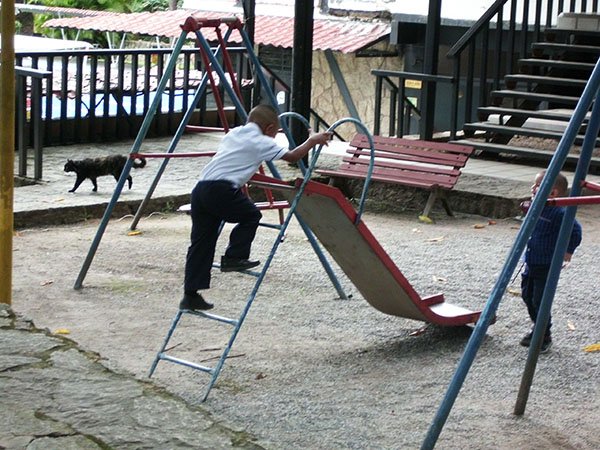
1.- Área Motriz. ¿Está tu niño caminando?¿cuántas veces se cae, cuantas veces intenta levantarse para seguir haciéndolo?, ¿ya dio los primeros pasos, busca apoyarse, se cansa con frecuencia y se va por lo seguro volviendo al gateo?, ¿le causa frustración y se pone de mal humor?, ¿atiende a tu llamado y se dirige hacia ti? Observa, observa todo.
Este mismo proceso es válido para la ida al baño, el agarre y uso de objetos específicos como cubiertos, ropa, tetero; en los juegos del parque observa sus habilidades y destrezas, ¿Dónde se monta?, ¿con qué facilidad lo hace?, ¿Qué puede y qué no puede hacer? En fin, esta área abarca todo lo que implica movimiento.
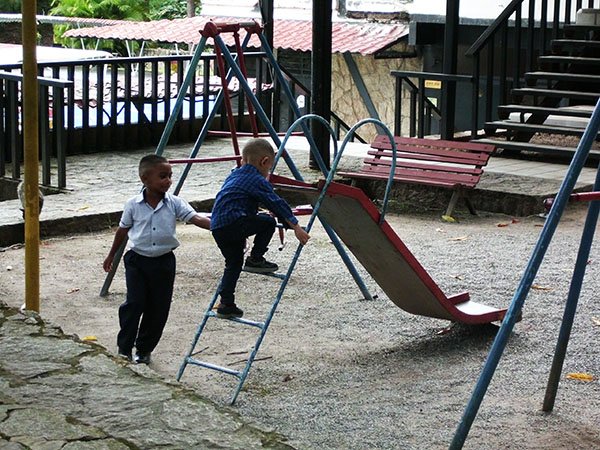
2.- Área del lenguaje. Esta área es apasionante, la manera en que el niño va construyendo y ampliando su mundo a través de las palabras, aquí podemos observar: ¿Qué palabras balbucea, qué lo motiva a pronunciarlas, cuáles va incorporando?; ¿haces algo para estimular su lenguaje, te funciona?; ¿eres su intérprete o lo ayudas a tener una mejor pronunciación, cómo lo haces?; ¿hace construcciones lingüísticas coherentes, asociando las palabras con el objeto así no lo tenga presente?
Este es un campo muy amplio y el niño en los primeros años avanza muy rápido en él, hacer el trabajo con niños más grandes es súper estimulante sobre todo si tenemos presente aquella famosa frase de Wittgenstein que dice: “Los límites de mi lenguaje significan los límites de mi mundo”, significando con ello que solo conocemos aquello que podemos apalabrar. Nosotros como creadores de contenido conocemos el valor de las palabras. Este es un gran espacio para explorar los avances de nuestros niños.
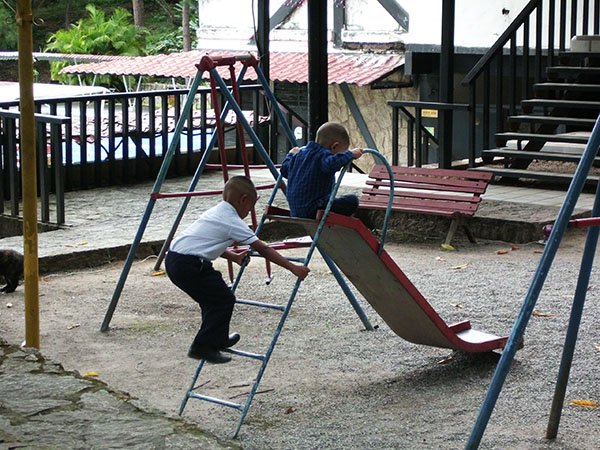
3.- El área social-afectiva-emocional. Acá también tenemos un abanico amplio para hacer nuestras observaciones. ¿Qué pone a tu niño alegre, triste, molesto o en cualquier otro estado emocional, sabe expresarlo con palabras con gestos?; ¿es cariñoso, muestra sus afectos, cómo lo hace?; ¿comparte amigablemente con sus amiguitos, hace amistad fácilmente con otros niños y en diferentes entornos?; ¿le gusta que lo toquen, lo abracen o siente rechazo hacia el contacto físico?; ¿ayuda, protege y acompaña con buena disposición a sus hermanos o amiguitos cuando ellos lo requieren?
Como vemos hay mucho que observar aprender en las distintas áreas, ten a mano lápiz y papel, anotando lo resaltante y no resaltante. Todo, absolutamente todo se convierte en una fuente de inspiración y más cuando se trata de nuestros hijos, nietos o sobrinos.
Bueno amigos ya voy cerrando el post, la intención es que te lleves la idea que a parir de la observación y auto-observación, en la relación con nuestros hijos, podemos ir construyendo un conocimiento basado en la experiencia que puede aporta mucho a otros padres.

In English
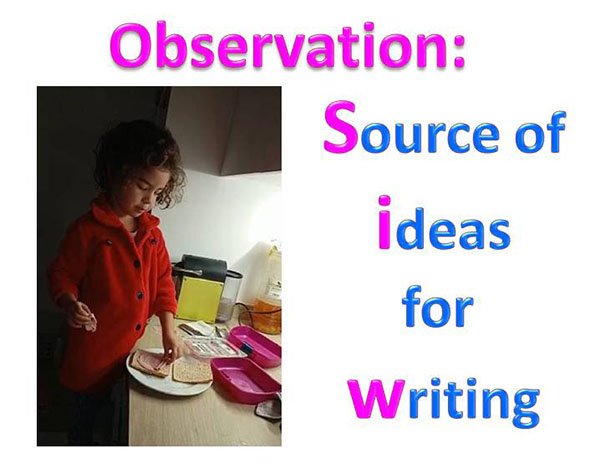
My neighbors are a family of four adults and a baby who is about a year and a half old. Our houses are divided by a perimeter wall, the window of my laundry room faces the front yard of their house, so when they are on the porch it is easy to hear them very clearly even if I don't want to. The thing is that many times I listen to the young mother playing with her little girl and teaching her new words and the truth is that her results are amazing.
The little girl speaks quite clearly and is already making constructions of complete ideas, she no longer says only daddy but daddy come; she doesn't say water but give me water or she doesn't say grandma but come up grandma, I imagine to indicate that grandma should carry her.
Diana turned one year old in January and perhaps since November her mother began to "train" her to blow out the candle for her first birthday. Every evening she would sit on the porch and sing happy birthday to her, with her index finger, simulating a candle, they would blow it out and both would clap their hands, indeed, on her birthday the little girl blew out the candle and applauded her day.
When I met with the grandmother, excited, she began to tell me about the child's progress: she told me that the girl talks up to her elbows but that she is too weak to walk, what she wants is to be in her arms all day long, that she is already eating everything, that she likes to grab the spoon, that she already wants to eat by herself and that's how she goes, like any proud grandmother who is measuring the progress of her granddaughter.
If we look at it from the outside, as is my case, I see that Diana is doing very well with her age, that verbally she has been very stimulated, all the adults talk to her constantly, they ask her questions, they teach her words from her environment, they sing to her and she responds very well to it. On the other hand, as she has four pairs of arms that want to carry her, it is possible that she has delayed her motor skills to walk, it is a speculation on my part, perhaps, if the four adults were to exercise her in walking, the child would already be running around the yard, it is a possibility.
What I want to show with this short description is that each child is a world, each one has its own times and that the stimuli make them advance in these processes.
When one studies pedagogy, there are many subjects related to the evolutionary development of children, that is, how they evolve at different ages in all aspects of their lives. Thus we have some general parameters that serve as a reference for parents, teachers, doctors, psychologists, among other specialists, which help us to determine that everything is going well with our children or alert us when we consider that something does not correspond to what we consider "normal".
Now, this evolutionary process also offers us an inexhaustible field for research and I mean that as parents we have the opportunity to carefully observe our children and "see" how they are carrying out their processes of change, in the same way, we can introduce positive stimuli to change their behavior or improve their skills, abilities and competencies.
No, don't be horrified, ha,ha,ha,ha,ha, it's not that you experiment with them, it's that everything you and your child do naturally, you now observe more closely, write down and describe your observations and record them.
Jean Piaget the famous Psychologist based his whole theory of learning, of the different stages of children's evolution, by observing his own children. So why not do it ourselves and provide the world with an experiential knowledge of how our children carry out their processes?
To all these, I make the proposal by the invitation that makes us the @motherhood community to give ideas for publications of moms / dads in Hive and what better opportunity than to dedicate ourselves to these observations and share them through a post. Of course, for this we have to take a period of time where we will observe the initial behavior: where our child is at this moment with respect to the point I'm going to focus on and after the stipulated time to establish what their progress has been, taking note of the whole process and giving answers to specific issues such as: Was it a natural process, you just observed, you did nothing to make it happen? or on the contrary, did you consciously stimulate your child throughout the process?
Now the interesting thing about all this work is that you can take any area and this is where the particular issues that I propose come from, let's make a short list of what might interest us, let's see:

1.- Motor Area. Is your child walking, how many times does he fall down, how many times does he try to get up to continue walking, has he already taken his first steps, does he look for support, does he get tired frequently and go back to crawling, does it cause frustration and does he get in a bad mood, does he respond to your call and come to you? Observe, observe everything.
This same process is valid for toileting, grasping and use of specific objects such as cutlery, clothes, bottle; in playground games, observe his abilities and skills, where does he ride, how easily does he do it, what can he do and what can he not do? In short, this area covers everything that involves movement.

2.- Language area. This area is exciting, the way in which the child builds and expands his world through words, here we can observe: What words he babbles, what motivates him to pronounce them, which ones he incorporates; do you do something to stimulate his language, does it work for you; are you his interpreter or do you help him to have a better pronunciation, how do you do it; does he make coherent linguistic constructions, associating the words with the object even if he does not have it present?
This is a very broad field and the child in the first years advances very fast in it, working with older children is very stimulating, especially if we keep in mind that famous phrase of Wittgenstein that says: "The limits of my language mean the limits of my world", meaning that we only know what we can manage. We as content creators know the value of words. This is a great space to explore our children's progress.

3.- The social-affective-emotional area. Here we also have a wide range to make our observations: what makes your child happy, sad, upset or in any other emotional state, does he know how to express it with words and gestures; is he affectionate, does he show his affections, how does he do it; does he share friendships with his little friends, does he make friends easily with other children and in different environments; does he like to be touched, hugged or does he feel rejection towards physical contact; does he help, protect and accompany his siblings or little friends with good disposition when they need it; does he help, protect and accompany his siblings or friends when they need it?
As we can see there is a lot to observe and learn in the different areas, have a pencil and paper at hand, noting down what stands out and what does not stand out. Everything, absolutely everything becomes a source of inspiration and more when it comes to our children, grandchildren or nieces and nephews.
Well friends, I'm closing this post, the intention is that you take with you the idea that through observation and self-observation, in the relationship with our children, we can build a knowledge based on experience that can contribute a lot to other parents.

Translated with www.DeepL.com/Translator (free version)
Fuente de imágenes: Archivo personal



MIS REDES SOCIALES



Cortesía de la comunidad

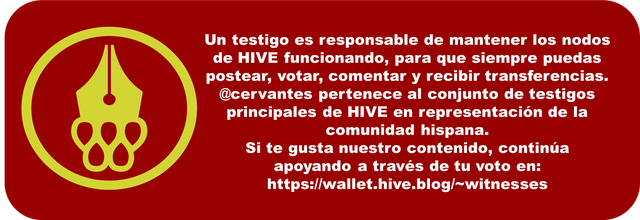
Te invito a apoyar este proyecto como witnes y a formar parte de esta gran comunidad uniéndote a su Discord en el siguiente enlace:
Discord de la comunidad Cervantes




Hola @damarysvibra, feliz y bendecido día. Me parece estupenda iniciativa de la comunidad de @motherhood , es una forma de ayudar a los niños y padres a que sea visto todo lo que involucra el desarrollo evolutivo de los niños, para su buen desenvolvimiento. Tu post quedo genial, ya que planteas la forma de poder medir la evolución de los niños en sus diferentes etapas. Normalmente los padres andan tan atareados que no saben ni siquiera si los hijos se están desarrollados o no de acuerdo a su edad. Inclusive a veces alguien que no siempre está en el entorno familiar, ven algo que ocurra al niño, por ejemplo: ha tardado en caminar y hablar, no contrala los esfínteres, la parte de motricidad no está de acuerdo a la edad, entre otros. Pero, bueno, a veces tampoco es fácil que los padres acepten que los niños no se encuentran dentro de los estándares normados y se les hace cuesta arriba ver muchas veces la realidad de las cosas. Lo que sí es importante es que en caso de detectar algo que no está bien, tratarlo a tiempo para poder ayudarlos.
Hola @dorytagil2022 si, la observación es completamente necesaria para estar tranquilos con respecto a nuestros hijos, digamos que es la herramienta básica para darnos cuenta que todo va bien o si el niño requiere de una atención especial porque algo no encaja con lo que ya tenemos por conocido.
Como dices, a veces no es fácil aceptar cuando nuestro hijo presenta una dificultad y muchas veces ni nos damos cuenta de que existe, de pronto es un tercero quien te hace caer en cuenta.
Gracias por pasar y comentar 😊.
Me da gracia, este post lo monte en la comunidad equivocada, esta semana he estado algo dispersa, voy a escribir un post en catarsis porque aunque me río, las antenitas de alerta se están activando. Saludos y feliz domingo.😊
Hola @damarysvibra, gracias, igual para ti. La verdad el día a día nos dispersa, pero eso quiere decir que estamos vivos. Cuídate.
This could certainly be an interesting things to observe and record. I wonder how many could just observe without adding some input. I think most of us as parents would be drawn towards guiding in one way or another.
Yes, of course we are, in fact we are always intervening in their processes, however, it is interesting that first moment of observation to know what they are doing and how they are doing it, plan our intervention with a stimulus and then observe the results. For example, teaching him to put on his socks, perhaps we have seen that he is trying to do it, so he feels curious and is ready for that action.
One fine day we prepare to teach him, we give him a step by step with patience and love and let him try it: Suddenly that day he does not succeed, we keep trying in successive sessions until one fine day he does it.
Observing and following the process, besides being beautiful, describing how you both succeeded can be a good technique for others to follow.
Greetings, thanks for stopping by and commenting. 😊
Translated with www.DeepL.com/Translator (free version)
Saludos @damarysvibra
La observación y el registro de cada hallazgo es lo que nos da la oportunidad de evaluar lo que estamos haciendo y en ese seguimiento podemos obtener el rendimiento de lo que estamos llevando a cabo. Pudiera decírtelo como investigadora. Sin embargo, en este momento no estoy escribiendo desde mi Hacer como investigadora. Mas bien puedo decirte que te escribo como madre o como la mujer que todos los días interactúa con su jardín. La observación me da la posibilidad de mirar cada transformación. Así mismo, la observación me dio la oportunidad de agudizar mi intuición y saber en qué medida el ambiente externo podía influir en cada uno de mis hijos e hija.
Me encantó el tema ... Infinitas Bendiciones para tí.
Feliz tarde @marlenyaragua que gusto saludarte espero que tú y los tuyos estén muy bien 🙏
Con respecto al tema gracias por aportar, eres una "persona de ciencia" apasionada de la investigación y como señalas es a través de la observación atenta y documentada que podemos ver los cambios, los avances y decidir oportunamente si debemos intervenir.
Gracias por pasar y comentar. Un abrazo lleno de cariño. Bendiciones para todos.
I'm not a parent but I do have several niblings. I have lived with them for a long time and I have seen different approaches that each of my siblings do with their kids and what you said about each child having their own time is true. Not all my siblings have the same speed in progress and development. I remember my mom telling me about one of our neighbor's kids who has speech delay. She advised our neighbor to bring her son to our home for there are several kids there that he can interact with. Our neighbor is busy and most of the time her kids are left alone. However, our neighbor resorted to speech therapy. It was a slow progress but it worked. It makes me wonder if our neighbor did take heed of my mom's advise would there have been a speed in the progress of our neighbor's son?